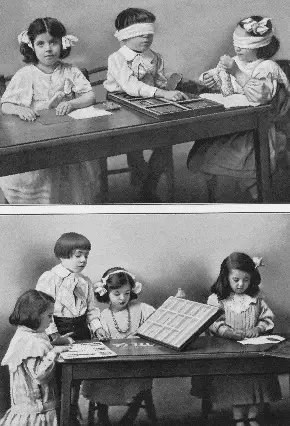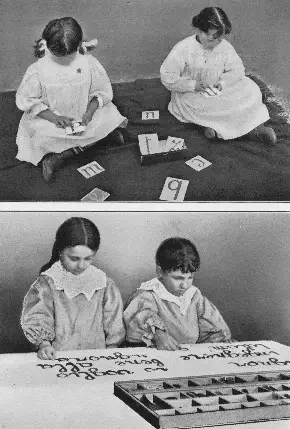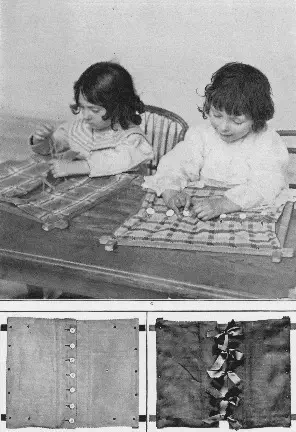Unit 4 (M1): Discovery of the Child by Dr. Maria Montessori
- – Please watch the video presentation above to understand Maria Montessori’s Journey to the Discovery of the Child and then continue reading the lesson below. There is a bonus podcast at the end of the lesson. Please scroll down to the end.
- – Refer to Chapter One of Module 1 (Introduction to Montessori) for further reading.
Discovery of the Child
Maria Montessori and her Journey to the Discovery of the Child
Dr. Maria Montessori’s journey to discovering the true nature of children was groundbreaking and transformative. Through keen observation and a scientific approach, she uncovered how children naturally learn and thrive when provided with the right environment. Her insights shaped a method of education that focuses on understanding and nurturing the child’s inner potential.
Understanding the Child
Montessori’s approach began with deep observation. If she noticed unusual behavior, she refrained from jumping to conclusions, instead waiting to see if it happened consistently. This method allowed her to recognize patterns and understand the conditions under which children revealed their true nature. She tested these observations across different settings worldwide and found that children behaved similarly under the right circumstances, proving that these behaviors reflected their innate qualities, not external influences.
The Need for Freedom and Constructive Work
Dr. Montessori observed that children naturally loved purposeful work, especially when it suited their age and developmental needs. When given freedom, they would engage deeply, often repeating tasks until they achieved a state of concentration. This discovery led her to adapt classroom environments, allowing children to choose activities and work for as long as they wished.

Ability to Choose Activities
One significant discovery came when Montessori observed children selecting their own activities when left unsupervised. They worked with focus and purpose, proving that they could independently choose tasks that matched their abilities and interests. This moment highlighted the importance of allowing children to explore their environment freely. Montessori compared this revelation to sowing seeds and discovering gold, recognizing a profound responsibility to honor children’s innate potential.

Key Discoveries
Dr. Montessori made several critical discoveries during her work with children, including:
- Love for Purposeful Work: Unlike adults, children are driven by an inner urge rather than external rewards. They work to fulfill developmental needs and reach personal goals.
- The Power of Freedom: Children flourish when they are given freedom within a prepared environment. True discipline arises naturally from this freedom, rather than being imposed by adults.
- Spontaneous Learning: When children find activities that meet their developmental needs, they engage deeply, repeat tasks with interest, and achieve concentration. This concentration lays the foundation for true learning.
- Importance of Order: Young children thrive in orderly environments. This extends beyond physical order to include consistent rules, values, and clear purposes for objects and activities.
Transforming the Environment
Montessori believed the environment was crucial to unlocking a child’s potential. She introduced child-sized furniture, lightweight tables, small tools, and low shelves, making classrooms more accessible and comfortable for children. Rugs defined individual workspaces, and classrooms were arranged to minimize congestion and encourage smooth movement. Even outdoor spaces were designed with children’s needs in mind, featuring low sinks, small toilets, and appropriately sized gardening tools.
Independence and Practical Life Skills
Practical life exercises became a cornerstone of Montessori education. Activities like pouring, cleaning, dressing, and gardening helped children develop motor skills, independence, and a sense of responsibility. These tasks bridged the gap between intelligence, willpower, and movement, fostering well-rounded development.

Freedom and Discipline
Montessori discovered that freedom and discipline are deeply interconnected. When children are free to choose their activities and work at their own pace, they naturally develop self-discipline. She found that real discipline comes from within and is nurtured by an environment that respects the child’s independence.
Normality and Deviation
Montessori observed that children’s behavior varies based on their environment. In chaotic or restrictive settings, children might act out or display undesirable traits like stubbornness or disobedience. However, in well-prepared environments, these same children became calm, orderly, and responsible. Montessori called this natural, positive state “normality,” while negative behaviors were labeled “deviations.”
Revolutionary Education
Montessori’s discoveries transformed education. She realized that children are capable of absorbing knowledge in areas traditionally thought to be too complex, like math, science, geography, and culture, as long as the material is presented in an engaging and age-appropriate way. This holistic approach ensured children’s total development, preparing them for life rather than just academic success.
The Montessori Method’s Legacy
Dr. Montessori’s work demonstrated that children’s learning thrives on independence, freedom, and carefully designed environments. Her approach emphasized respecting the child’s individuality and innate ability to grow and learn. By listening to what children reveal through their actions and interests, adults can create nurturing environments that empower children to develop into confident, self-disciplined, and capable individuals.
Her famous phrase, “Help me do it myself,” encapsulates the Montessori philosophy, reminding educators and caregivers to guide children toward independence rather than doing things for them. Through her discoveries, Dr. Montessori laid the foundation for an educational revolution that continues to inspire schools and educators around the world.
Additional Resources
